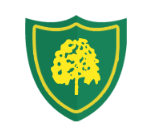Year 4JC
Brilliant Bodies
As scientists, we will:
- Learn the function of the human digestive system.
- Learn the functions of different types of teeth
- Find out how to care for our teeth
- Find out how the differences in teeth relate to an animal's diet
- Learn what the role of a producer, predator or prey is in a food chain
- Learn about the impact of the work of the scientist: Paul Sharp
As computer technicians, we will:
- Learn how software can be used to work online collaboratively.
- Understand how to contribute to somebody else's work.
- Learn how to create effective online presentations.
- Learn how to create and share Google forms.
- Create a shared spreadsheet to explore data.
As musicians, we will:
- Use body percussion to vary pitch, dynamic and tempo
- Create a graphic score to compose and perform music
- Compose and perform a piece of music using musical notation
As writers, we will:
- Use Standard English forms for verb inflections
- Extend the range of sentences with more than one clause by using a wider range of conjunctions including when, if, because, although
- Indicate possession by using the possessive apostrophe with plural nouns
- Recognise the difference between plural and possessive ‘s’
- Build a varied and rich vocabulary
As mathematicians, we will:
- Learn to multiply and divide multiples of 3, 6, 9, 7, 11 and 12
- Multiply and divide by 1 and 0
- Multiply 3 numbers
